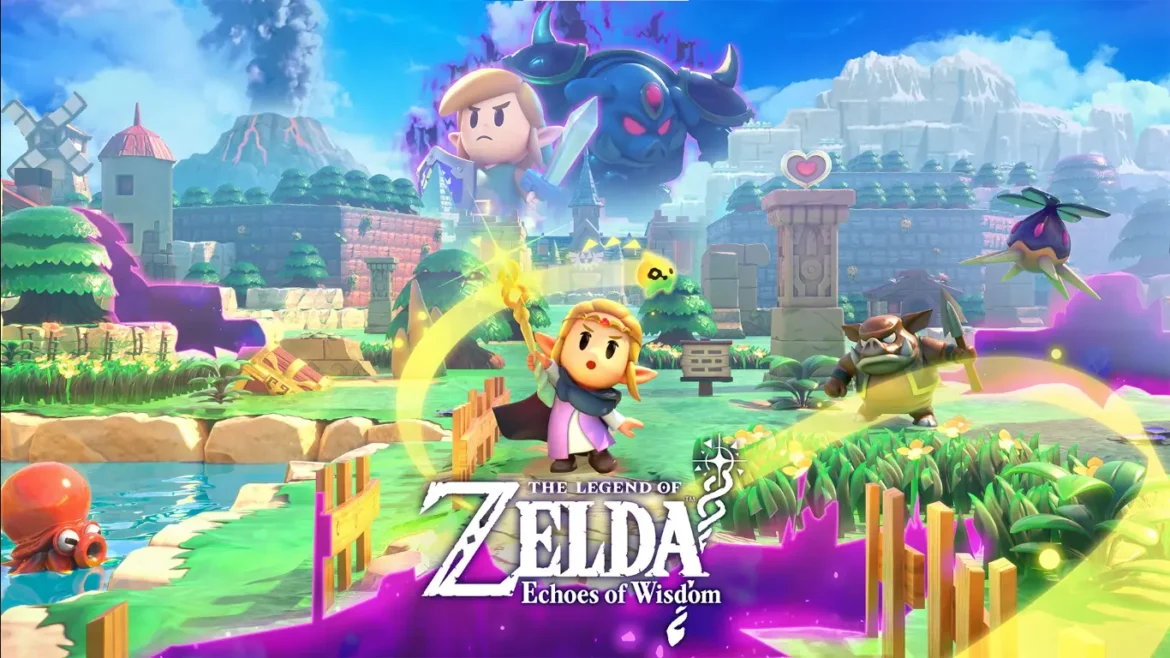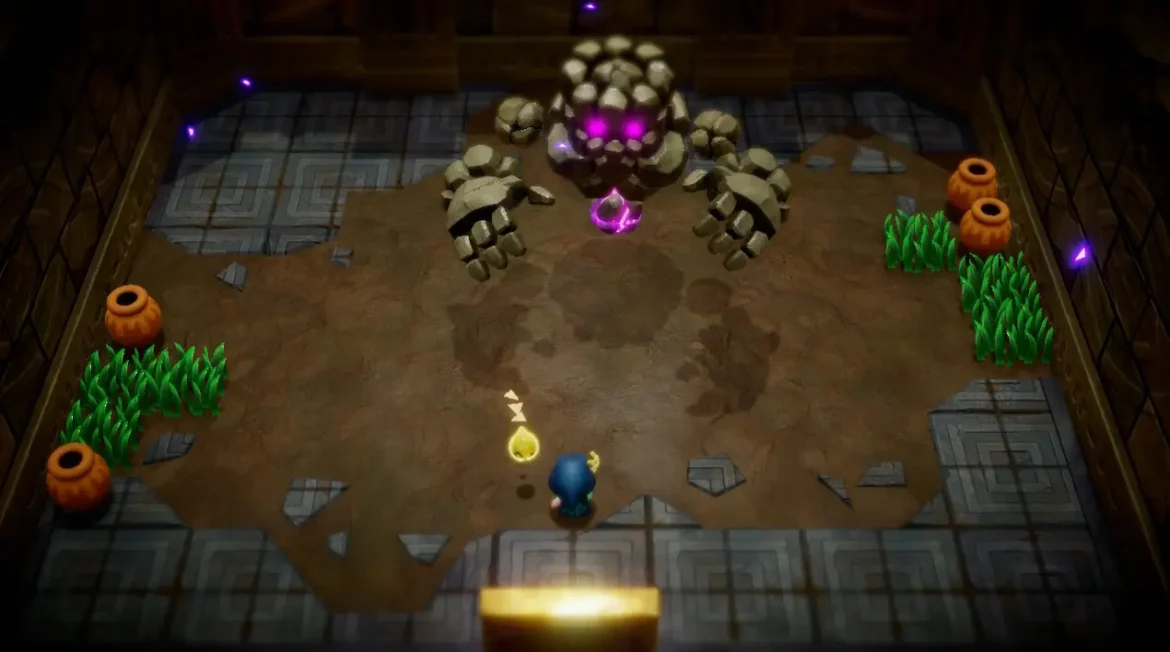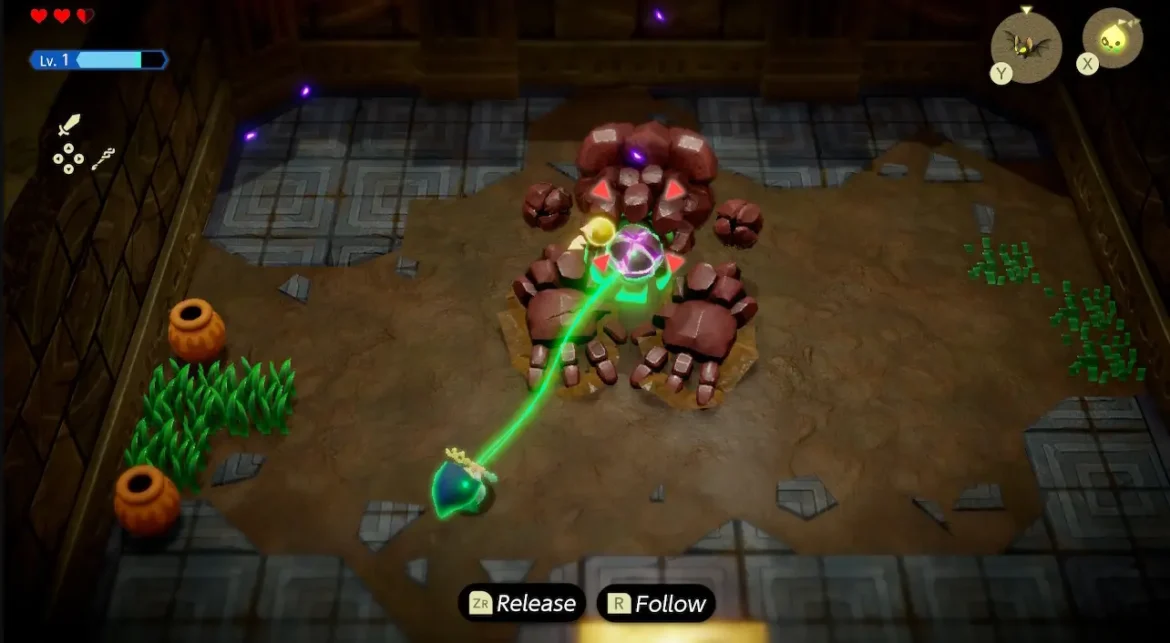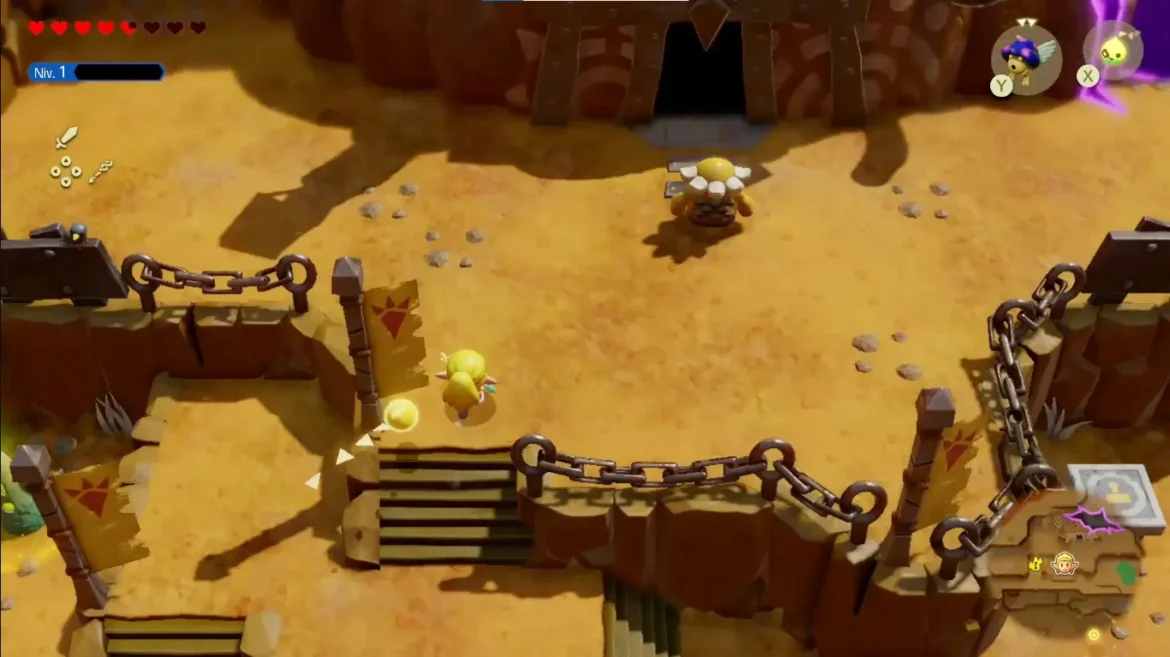Release Date : September 26, 2024
Developer(s) : Nintendo EPD Grezzo
Publisher(s) : Nintendo
Platforms : Nintendo Switch
To this day, The Legend of Zelda fans are still divided into two broad communities: those who consider A Link to the Past to be the pinnacle of the franchise, and those who prefer Ocarina of Time. Nintendo has managed to satisfy both these audiences with the Switch, offering 3D titles such as Breath of the Wild and Tears of the Kingdom, while paying homage to the 2D era with games like Link’s Awakening, and today, The Legend of Zelda: Echoes of Wisdom. After completing this new opus, it’s finally time for our review.
Since we were able to discover the end credits, we now know that this is a new collaboration between Nintendo and the Grezzo studio ( known for developing The Legend of Zelda Ocarina of Time 3D and Majoras’s Mask on 3DS, as well as the remake of Link’s Awakening).
Table of Contents
A Princess’s Journey
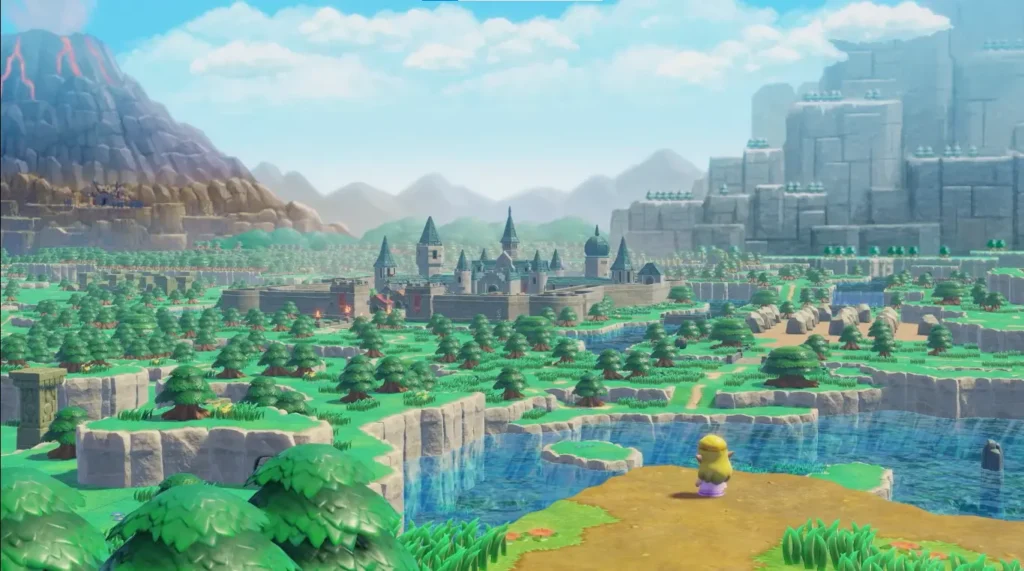
Completing The Legend of Zelda: Echoes of Wisdom recaptures, to some extent, the magic of The Legend of Zelda: A Link to the Past. A vast kingdom of Hyrule lies before us, overflowing with towns, dungeons, caves, and hidden areas, all enhanced by an impressive arsenal. Thanks to the innovative open-world approach first introduced in Breath of the Wild, this new opus takes full advantage of this ultimate freedom, despite its more contained form. Hyrule can be explored freely, with no real boundaries, apart from a “glass ceiling” if you try to get too close to the star, like Icarus.
Here, we have the impression of controlling a giant diorama, with numerous toys at our disposal through Zelda, the first heroine of the franchise that literally bears her name (once again, we’re putting Wand of Gamelon aside for obvious reasons). A feeling reinforced by the “toy chest” art direction, echoing the one from the remake of The Legend of Zelda Link’s Awakening.
Compared to A Link to the Past, this is a much lighter, more accessible game, which relies mainly on creativity, with as much freedom as possible, but with some restrictions. The story is fairly classic for Zelda: strange rifts have appeared throughout Hyrule, causing the disappearance of many of its residents. With the roles reversed, it’s up to Princess Zelda to unravel the mystery of this new threat and find Link. To do so, she is helped by Tri, a mysterious fairy who entrusts her with the Scepter of Wisdom, a relic capable of copying objects and monsters to reproduce them as echoes.
Thanks to this power, our heroine can reproduce the surrounding objects she discovers and memorizes, such as a crate, a table, or a bed, as she pleases. She can also use this ability to copy defeated monsters and summon them.
Echo-Logic Skills

Despite everything, this change of perspective allows us to apprehend the world of Hyrule in a new light, with numerous NPCs, starting with the members of the Hyrule court, as well as all the locals Zelda meets along the way. Keen players can notice numerous references to previous Zelda games. Among the interesting new ideas is the presence of Zora races, for the first time in the franchise.
After the long intro sequence in which Zelda must escape from the castle prison and close her first rift, you’re free to explore the open world at your will, completing the dungeons in any order you wish. The game alternates between exploration, secret discovery, combat, and puzzle-solving. Echoes add a refreshing element to the gameplay, and collecting them throughout the adventure is one of the game’s greatest pleasures.
The Legend of Zelda: Echoes of Wisdom adopts part of the philosophy of Tears of the Kingdom, offering a wide variety of tools to stimulate creativity and accomplish different objectives in original ways. However, none of this is imposed. You can finish the game with just a handful of echoes and ignore the rest.
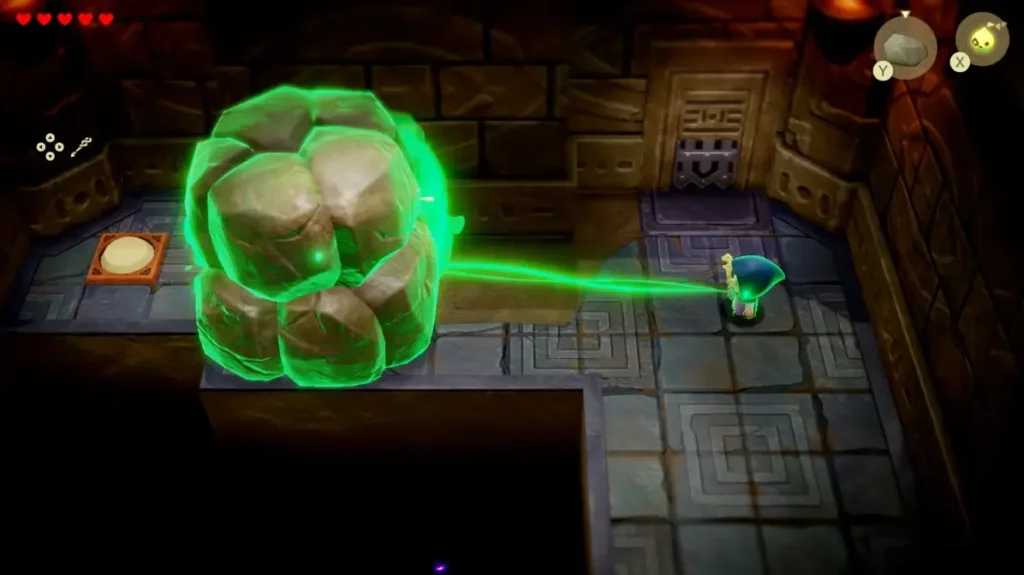
However, it would be a shame to miss out on all the possibilities, especially since discovering the synergies between echoes is one of the major attractions of the adventure. In addition, Zelda quickly acquires two other powers that enrich the use of echoes: Bind and Reverse Bond. Bind allows you to attach to various objects or enemies and reposition them, making it particularly useful for tasks like pushing enemies off cliffs. Reverse Bond works similarly, but instead of controlling the object, Zelda mirrors its movements. For example, if a platform is moving above you, you can use Reverse Bond to attach to it and move along with it. It’s a pity that the last mechanic is under-exploited, except in a few specific dungeon puzzles, and is rather limited in its creative potential.
A Tricky Tri-O of Trials
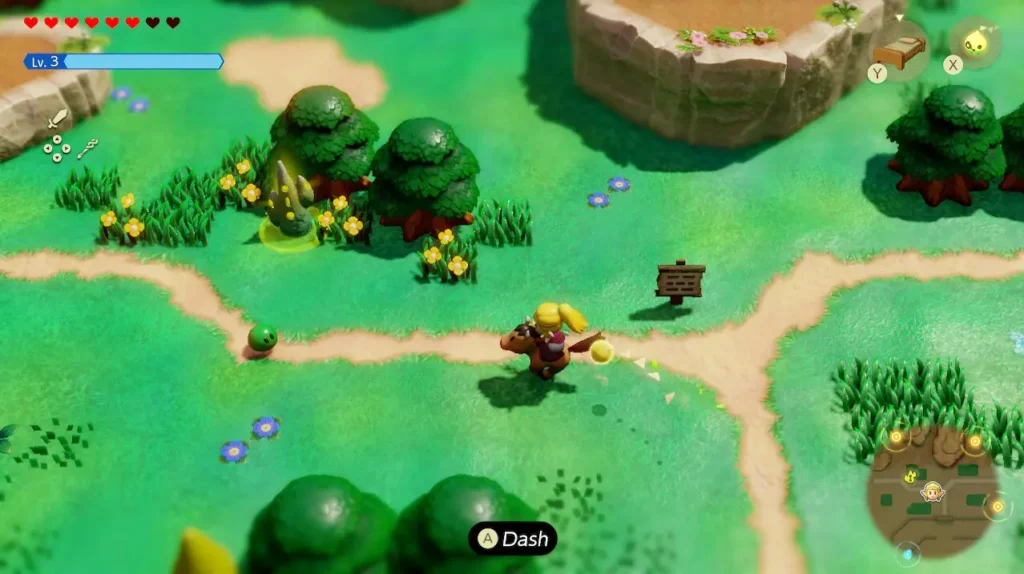
You shouldn’t ask too much of the system, because some combinations that seem logical won’t always work as intended. For example, if you place a floating bed on the water and add an air blower, this will unfortunately not turn it into a mobile boat. Plus, each echo has a cost defined by a number of triangles. This maximum number of triangles is visible on Tri, and can increase as you progress through the adventure and close rifts. The cost of echoes can even be reduced. This progression system is enough to make you feel a slight increase in power and possibilities over time.
You can summon a powerful creature that consumes all your triangles, or cause chaos by summoning a large number of smaller monsters. Thanks to the various elements (fire, ice, and lightning), you can make life difficult for your opponents with a few clever combinations. In fact, the principle is quite simple: press one button to make an object appear, another to make it disappear, and then press and hold to remove all echoes at once.
Unfortunately, navigating the inventory is a bit difficult, with horizontal scrolling breaking the rhythm. Although it is possible to sort your inventory by frequency of use, order of acquisition, or cost, you often find yourself scrolling the bar, especially when you want to test synergies in action. Just a second horizontal line dedicated to monsters would have made navigation smoother. As in the early days of Pokémon, there are over 150 Echoes to collect, but this figure needs to be qualified, since some of them are variants or more powerful versions of the same monsters.
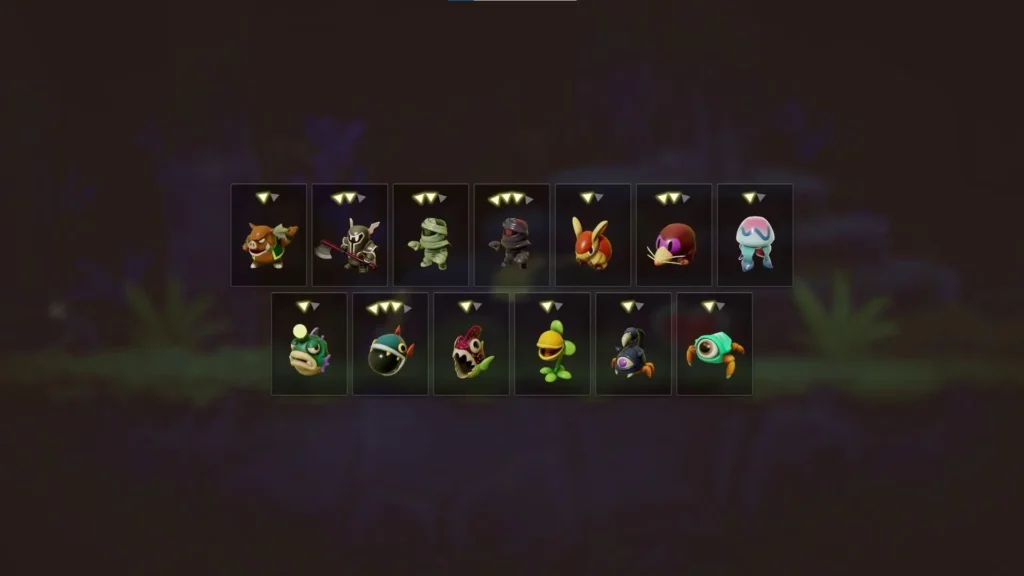
The dungeons still manage to keep us thinking, with puzzles and mechanisms to be activated by the echoes. Even if freedom is the order of the day most of the time, we wouldn’t have minded more puzzles requiring specific combinations of echoes. Even so, in most cases, we’re back to the easy way out. The water cube, for example, is such a convenient echo that it often leads to laziness.
Courage and Wisdom
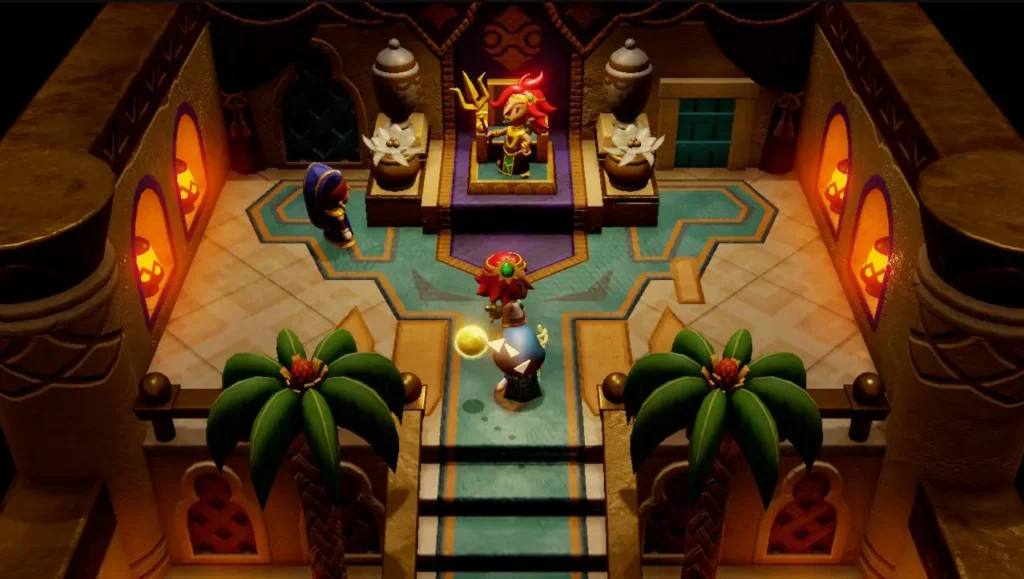
Zelda possesses the power of wisdom, but it’s not always enough to drop the bosses’ life bars. To do this, she can rely on the swordsman mode, a power she borrows from Link to strike like him for a brief moment. This makes the game a little easier, but the studio’s choice can be explained by the great resistance of the bosses, who can be real punching bags if you attack them with echoes alone. Swordsman mode allows you to strike hard when the enemy is in a weak position.
However, the difficulty is still high enough for those seeking a little challenge, especially in Hero mode which, compared to normal mode, doubles the damage taken, prevents hearts from appearing, and removes certain accessories. The Legend of Zelda: Echoes of Wisdom offers generous content, with collectibles, side quests, and mini-games scattered throughout Hyrule. It takes between 20 and 30 hours to complete the story, and around 40 hours for a 100% completion.
With a larger, visually richer world, the artistic direction of Link’s Awakening remake is even better expressed in The Legend of Zelda: Echoes of Wisdom, offering a particularly satisfying result, although it won’t win unanimous approval like Wind Waker in its day. The game’s lovely music further reinforces this charming, magical ambiance. Unfortunately, on the technical side, there are a few annoying FPS drops when traveling through the open world. This occurs mostly outdoors, but is less pronounced than in Link’s Awakening.
There’s a sudden drop of around 10 to 15 fps for a second, before returning to normal fluidity. This problem is most evident in docked mode, whereas in portable mode, the drop in resolution seems to allow for smoother transitions. This doesn’t spoil the overall experience by any means, but these drops are present enough for us to mention them here.
Conclusion
The Legend of Zelda: Echoes of Wisdom proves that “A Link to the Past”-style Zelda heirs are still relevant today, and can even be modernized to breathe new life into the genre. Despite a few minor issues, Princess Zelda’s adventure is a real success, and has nothing to be ashamed of when compared to Link’s adventures. There’s plenty of content and the classic ingredients of the formula, enriched by a dose of freedom and creativity expressed in the echoes. Overall, Echoes of Wisdom stands out as one of the best games on Switch this year.
